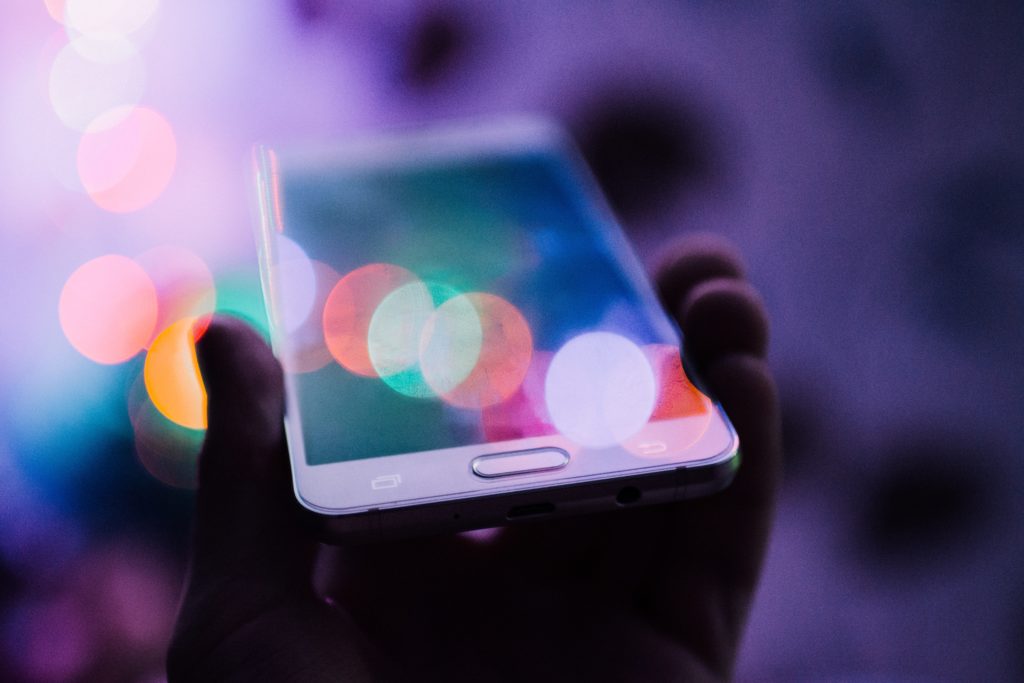
Can You Use Devices Before Bed and Still Sleep Well?
For many of us, the prospect of banning technology two hours before bed can be as horrifying as insomnia itself. Luckily, there are ways to have your digital cake and eat it too.
Catching up on social media, or even a few last emails, can be a tempting way to clock off for the night. But there’s a cost to our 21st-century obsession with staying connected 24/7. There have been many studies verifying the link between exposure to blue light and the suppression of melatonin, a hormone that is crucial for helping us fall asleep.
Our body’s internal clock
Your circadian rhythm is like an internal, biological timetable that affects a range of bodily functions, including wakefulness, hunger, and your body’s self-repair cycle. Evolution has tuned your body to rely on information from the environment to keep this rhythm in synch with optimal times during the day when it is best for you to be alert — on the lookout for risks and opportunities — and when it is time to rest and digest.
During daylight hours, sunlight suppresses the production of melatonin, known as the sleep hormone. In this regard, we are most sensitive to wavelengths of light in the band of 459-480nm (nanometres), which correspond to the blue end of the spectrum. The reason why we feel awake and alert during daytime is because blue wavelengths form a major part of sunlight’s visible spectrum. By default, high-strength LEDs (light-emitting diodes) emit light that falls right within this range, but ‘white’ ones have a yellow filter on the light-emitting semiconductor that tricks our eyes into seeing the light coming from them as white.
This LED technology is used to power much of the artificial lighting in our homes — ranging from downlights to LED tubes that can be retrofitted as strip lighting — as well as many of the screens in our homes. Many ambient lights that use CFL (compact fluorescent light) fittings also emit daylight-spectrum frequencies, which can be helpful in the daytime in working spaces such as laundries or kitchens. But a better choice for living areas are CFLs labelled ‘warm white’, which filter out much of the blue end of the spectrum and emit a softer, more candle-coloured hue instead.
Get back on schedule
Regardless of where the bluish glow is coming from, the net effect is that it’s stalling our internal timetable, and keeping us wired and alert at a time when we should be growing drowsy and feeling naturally tired. The simplest solution is not to use TVs, laptops and other devices with backlit screens for two hours before bedtime. But that isn’t the world we live in. As an alternative, you can follow these easy tips for reducing the effects of blue light, and you will be more likely to drift off to sleep more swiftly and easily.
- Catch some rays in the day: Neither blue light nor bright light are bad for you; it’s just that too much of them during the evening will make it hard for you to sleep. One simple way to counteract the effects of blue light in the evening is to spend time during the day being exposed to natural sunlight. The intensity of the wavelengths can do you a world of good — even if you just take a short lunchbreak outside, this will still be a big improvement on spending the entire day in an office filled with artificial lighting.
- Shift the spectrum: Applications such as f.lux change your screen’s brightness and colour output to reduce blue light automatically depending on what time of day it is. The software is available for Mac, Windows, iOS and Android.
- Set up night mode: Many devices offer a ‘night mode’ option in the settings which adjusts the intensity and hue of the light in the evening. Go into your settings and ensure it is set to be activated at least 2 hours before bed.
- Night time glasses: eyewear designed to block blue light is becoming more and more popular. An important bonus of goggles is that they also filter out ambient shades of blue, for example from overhead CFLs.
- Screen it out: You can also use a physical filter to block out blue light from your smartphone or laptop. Typically these take the form of a thin layer that is placed on top of your device or television screen.
- Opt for non-backlit: The screen of some latest-generation devices such as a Kindle Paperwhite are not actually backlit. On a tablet or laptop, the light is projected through the screen and enters our eyes at a relatively high intensity, even when the screen is dim. More advanced e-readers use LEDs that are pointed inward at the surface of the screen itself, creating a visible contrast between the light and dark areas. A much better reading option. Also, if you like to write or doodle electronically before bed, ReMarkable is a great option.
Play it smart to get the rest you need
For most of us in today’s modern society, blue light is affecting our sleep in some capacity, even if it is simply affecting the depth of your sleep and hence the level of rejuvenation you receive during your sleep. If you struggle to fall asleep, it may be one of many factors.
Try the above easy tips for yourself, so you can still wind down with the devices you love, without it affecting your sleep. If you need some extra help and support, get in touch with us today and let us assist you in getting a better night’s sleep.
